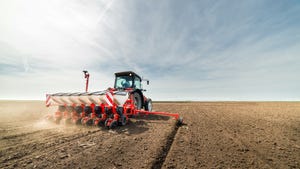
We’ve started to hear more from the Biden administration, particularly U.S. Trade Ambassador Katherine Tai, on their approach to trade. And unfortunately for agriculture, it does not appear to live up to her promise of walking, chewing gum and playing chess at all the same time.
Immediately following her confirmation in March, she tweeted exactly that, following up on many of the statements she made in her nomination hearing in the Senate. She inherited a precarious position on the world trade front following the unprecedented actions taken by the Trump administration with tariffs and troubled trade relations as well as a global pandemic.
Honored to serve as @USTRadeRep. I’m ready to walk, chew gum and play chess at the same time!
— Ambassador Katherine Tai (@AmbassadorTai) March 18, 2021
Darci Vetter, former U.S. agricultural trade negotiator during the Obama administration and active in negotiating the agricultural provisions of the Trans-Pacific Partnership, moderated a Farmers for Free Trade virtual roundtable Oct. 14 featuring the voices of many different segments of the ag sector. She too mentioned Tai’s promise yet to be filled to walk and chew gum at the same time by focusing on infrastructure and competitiveness, while also understanding that sectors such as agriculture are very much export dependent.
“I think we’ve heard loud and clear on this panel today that for agriculture to thrive and be co-investors with our government in strengthening the environmental resilience, the worker protections, etcetera for U.S. agriculture we also need to be expanding markets as well,” Vetter says
Farmers recognize that 95% of world’s customers exist outside the U.S. borders. Exports have taken on a growing role in U.S. farmer profitability.
As noted by the farmers involved in the panel representing corn, pork, beef and dairy farms, all supported a more multilateral approach to trade such as reentering the Comprehensive and Progressive Agreement for Trans-Pacific, the predecessor to TPP after Trump withdrew. Southeast Asia, which had many countries participate in that agreement, offers huge market potential for U.S. ag exports.
Joseph Glauber, senior research fellow at the International Food Policy Research Institute and former chief economist at USDA, says he would hope the Biden administration starts looking outward and looking for potential re-engagement in the region. We were very instrumental in creating the architecture for TPP, which now has become the CPTPP.
“I think it may take a little while for the administration to start doing that, but hopefully within the next year or so we’ll start seeing some move in that way,” Glauber says. “Otherwise, I think you risk really falling behind.”
The idea of going country to country and trying to counter the market access shortfalls dealt to the United States by not being in the CPTPP as done with Japan will be very timely.
Vetter, who says with her bias of negotiating many of the agricultural provisions in TPP, it was an “important deal and a good one.” Vetter adds in taking the administration at their word, Tai has said there are positive elements to TPP, but that they feel it is outdated particularly in the areas of labor and environment.
When looking at the renegotiation of the North American Free Trade Agreement, the tariff type barriers were already at zero for nearly all agricultural goods. The updated U.S. Mexico Canada Agreement instead addressed labor and environmental standards and science-based decision making for agriculture. “I think this administration would like to see that be a model for re-engagement in TPP,” Vetter adds.
Shortly after Tai explained how she looked to correct course on trade, Becky Rasdall, vice president of trade policy and international affairs for the International Dairy Foods Association, shared too her concerns on the more inward approach taken by the administration.
“You can reevaluate U.S. trade policy and what our positions should be and what needs to change and what needs to improve at the same time as you continue negotiating and getting that access for U.S. agriculture,” Rasdall says. “For instance, New Zealand had a consultation on the trade for all agenda and what it means to have a more equal, equally distributed trade benefits. And they didn't stop negotiating agreements in the interim.
“I'd really challenge people to think about ways that we can be a little bit more right hand and left hand as we move forward in this,” she says in the administration taking the opportunity to think critically about brainstorming how to improve our trade policy at the same time as we move forward in key markets and get that access back for farmers and agriculture.
Vetter says those in agriculture stand ready to help the administration “plot what that walking and chewing gum looks like to work forward and really strengthen the U.S. agriculture’s role in international trade.”
About the Author(s)
You May Also Like






